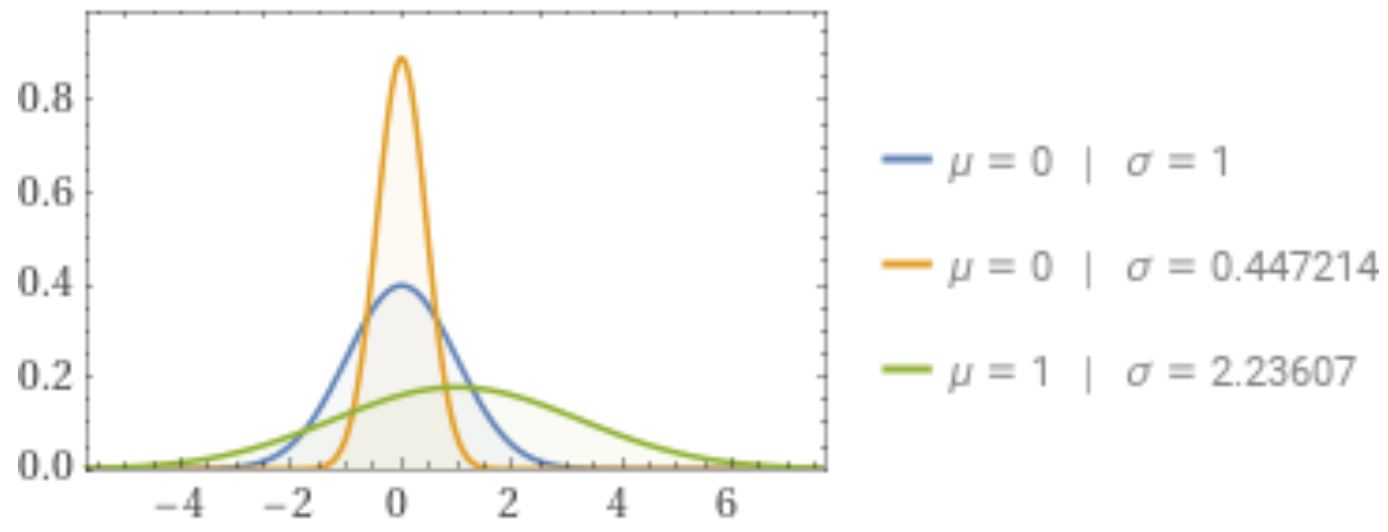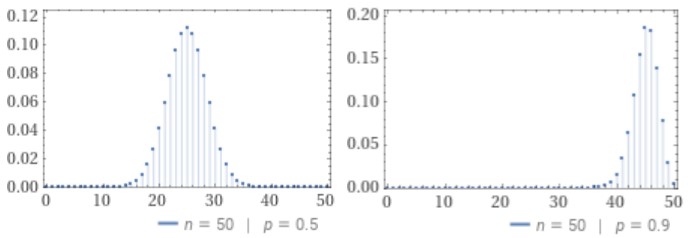Hypothesis Testing for Two Population Proportions
In this section, we will step through how to perform a hypothesis tests to determine if there is a difference between two population proportions.
Distribution Used
We will continued to use the Normal Distributions and z-scores.

Assumptions
In order to be able to perform the analysis in this section, the following assumptions must hold true:
- the samples are random and independent of one another
- the sample sizes and proportions from each group are large enough such that:
- [latex]np > 5[/latex]
- [latex]n(1-p) > 5[/latex]
Note: When the sample size and proportion are large enough, the discrete distribution approaches a normal/bell shaped curve:

The Difference Between the Two Curves Above
For the left-most curve:
- [latex]np = 50\times 0.5 = 25 > 5[/latex]
- [latex]n(1-p) = 50 \times (1-0.5) = 25 > 5[/latex]
- the curve closely resembles a bell-shaped curve
For the right-most curve:
- [latex]np = 50\times 0.9 = 45 > 5[/latex]
- [latex]n(1-p) = 50 \times (1-0.9) = 5 \ngtr 5[/latex]
- the curve is skewed left and therefore not bell-shaped
Note: The right-most curve is at the ‘limit’ of acceptable. If the value of [latex]n[/latex] was slightly larger or the value of [latex]p[/latex] slightly smaller (to increase the size of [latex]1-p[/latex]), we could perform the analysis in this section on this data.

